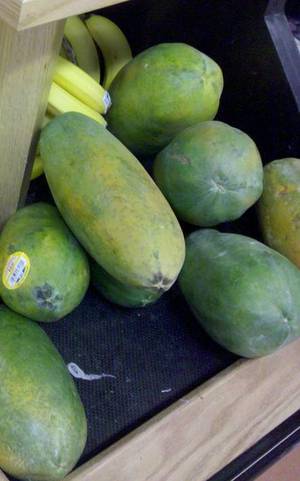When the body is healing from a wound, it will induce a process of scarring through the activation of thrombin and fibrinogen. Fibrinogen produces fibrin at the injury site to form the main texture of the scab. After fibrin crosslinks into scabbing and the body’s healing response proceeds, the immune system produces plasminogen. Plasminogen in turn stimulates the production of plasmin to break down the fibrin. This makes plasmin the body’s own fibrinolytic enzyme.
While this process of scabbing on the skin is extremely beneficial for wound recovery, things can get a bit more complicated when it comes to wounds on internal tissues. For example, when radicals damage blood vessel wall cells, the fibrin that builds up at the injury site can flake off in larger pieces. These can clog and stiffen blood vessels-especially microcapillaries in a number of locations around the body. This can result in stroke and even angina.
The dangers of arteriosclerosis and atherosclerosis are increased when plasmin genesis is inadequate in any way. This can lead to fibrin and thrombin levels that increase to the point of thrombosis. Thrombosis is characterized by excess fibrin and thrombin within the blood vessel walls, and a closing (occlusion) of the lumen (opening) of the arteries.
Because fibrinolysis is a natural part of our inflammatory process, various other inflammatory-related diseases are benefited by the body’s fibrinolytic processes. A number of natural compounds have also been shown to support this capabiliy:
Nattokinase
The nattokinase enzyme is produced by the bacterium Bacillus subtilis natto. Natto is a preparation of soybeans and a traditional food in Japan. It has shown strong fibrinolytic and proteolytic properties in a number of studies, including Suzuki et al. 2003, where it was shown to break apart fibrin and thus delay clotting, platelet aggregation and the likelihood of thrombosis. In a study of 92 deep vein thrombosis patients traveling by airplane, the nattokinase group had 60% fewer thrombosis events than the control group (Cesarone et al. 2003).
Aspergillus oryzae and Aspergillus melleus
A similar set of enzymes with fibrinolytic abilities are produced by these two species of fungi. The Aspergillus oryzae fungi is one of the most used fungi for enzyme production, as it produces a number of enzymes. It is also considered by many as a probiotic, as it is used for make sufu – a soybean curd fermentation quite like nattokinase. Animal studies have shown this enzyme’s thrombolytic and fibrinolytic abilities (Larsson et al. 1988). The protease produced by Aspergillus melleus has undergone in vitro and in vivo research showing that its major enzyme, seaprose, breaks down fibrin proteins. (Korzus et al. 1994). Although side effects are rare, a producer warns that these two fungal-source enzymes should not be taken by those with Crohn’s disease, cheese allergies or with intestinal bleeding.
Serrapeptidase
Another naturally-produced fibrinolytic enzyme is called serrapeptidase. It is also called serrapeptase and serratiopeptidase. Serrapeptidase is known for its anti-inflammatory properties, and is thought to help reduce clot formation and plaque build-up in the arteries. Serratiopeptidase is produced by the Serratia sp. bacterium, a resident originally found within the intestine of the silkworm. Serrapeptidase allows the silkworm to extract itself from the stickiness of its cocoon. In one study of carpal tunnel patients, (Malshe 2000) 60% were clinically improved after six weeks of taking serrapeptidase.
Bromelain
Another fibrinolytic and proteolytic enzyme with anti-inflammatory properties produced in nature is bromelain, an enzyme derived from pineapple. Animal and in vitro research has shown that bromelain can inhibiting thrombosis and platelet-aggregation. This appears to be accomplished by its modulation of plasmin-activator (Maurer 2001).
Papain
Papain, the enzyme contained in papaya is more recognized for its digestive tract benefits, but is also thought to have fibrinolytic properties. More research is needed to confirm these properties.
A number of other natural products, such as rutin, have been considered for their fibrinolytic abilities. Nature provides these because fibrin breakdown is part of wound healing and protein breakdown by many species. The market now offers a variety of blends of each of fibrinolytic supplements using these natural enzymes.
This information is for research purposes only. Be sure to consult your health professional if you suspect you or your family members have any other disease, and before making any significant changes to your diet, lifestyle or supplements. Consult with your physician before you take fibrinolytic enzymes. These supplements may interfere with medications such as blood-thinning medications. As in any supplement, these natural products are not intended to treat or cure any disease.
REFERENCES
Cesarone MR, Belcaro G, Nicolaides AN, Ricci A, Geroulakos G, Ippolito E, Brandolini R, Vinciguerra G, Dugall M, Griffin M, Ruffini I, Acerbi G, Corsi M, Riordan NH, Stuard S, Bavera P, Di Renzo A, Kenyon J, Errichi BM. Prevention of venous thrombosis in long-haul flights with Flite Tabs: the LONFLIT-FLITE randomized, controlled trial. Angiology. 2003 Sep-Oct;54(5):531-9.
Korzus E, Luisetti M, Travis J. Interactions of alpha-1-antichymotrypsin, alpha-1-proteinase inhibitor, and alpha-2-macroglobulin with the fungal enzyme, seaprose. Biol Chem Hoppe Seyler. 1994 May;375(5):335-41.
Larsson LJ, Frisch EP, Törneke K, Lindblom T, Björk I. Properties of the complex between alpha 2-macroglobulin and brinase, a proteinase from Aspergillus
Life Sci. 2001 Aug;58(9):1234-45.
Malshe PC. A preliminary trial of serratiopeptidase in patients with carpal tunnel Syndrome. J Assoc Physicians India. 2000 Nov;48(11):1130.
Maurer HR. Bromelain: biochemistry, pharmacology and medical use. Cell Mol
oryzae with thrombolytic effect. Thromb Res. 1988 Jan 1;49(1):55-68.
Suzuki Y, Kondo K, Ichise H, Tsukamoto Y, Urano T, Umemura K. Dietary supplementation with fermented soybeans suppresses intimal thickening. Nutrition. 2003 Mar;19(3):261-4.




